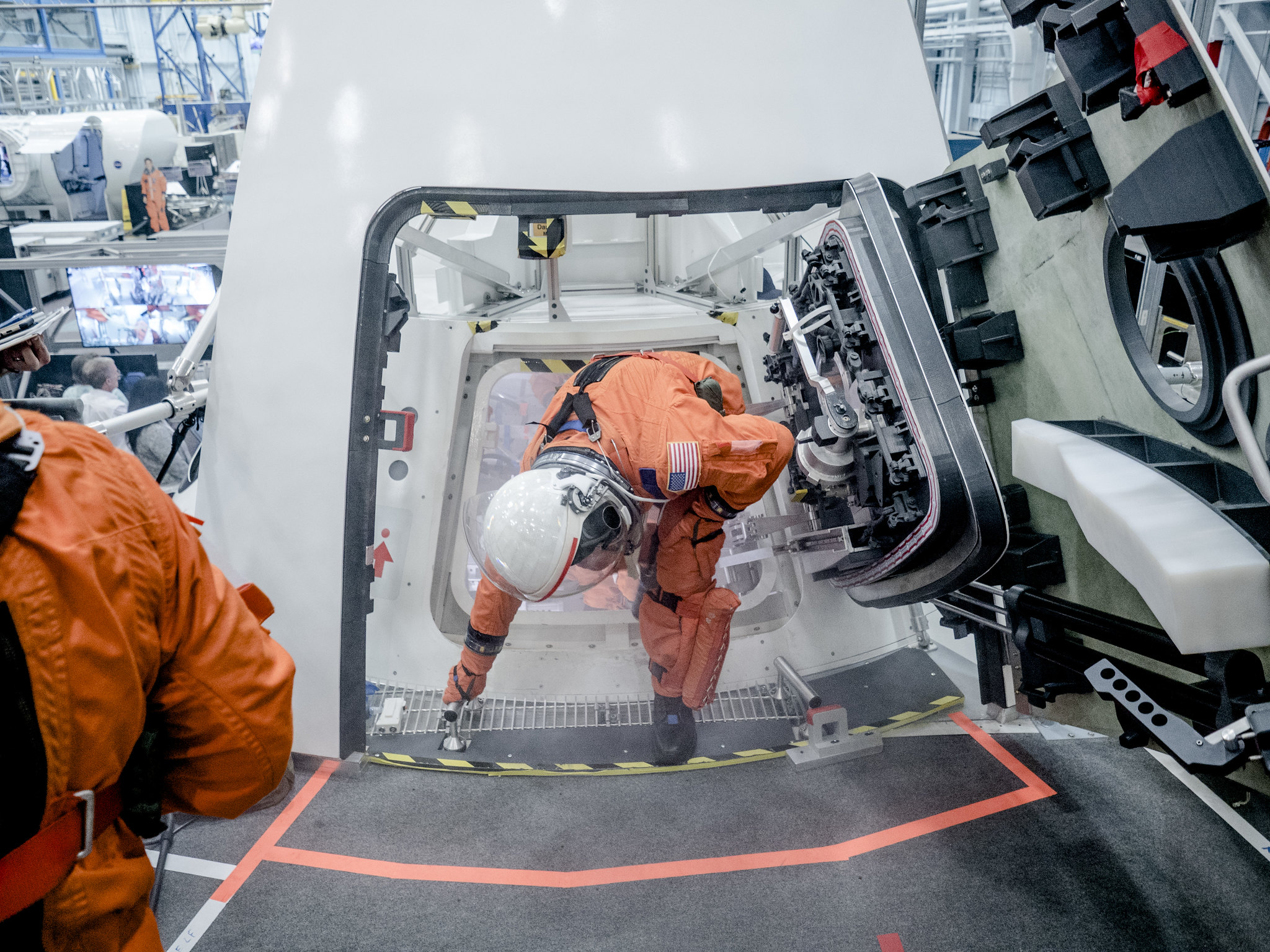NASA’s Orion spacecraft will carry astronauts from Earth on their journeys to the Moon. To ensure crew get there safely during Artemis missions, Orion’s design team is considering every detail about living and working inside the spacecraft.
Building Orion to support crew during multi-week missions requires engineers to think through countless details, from making room for exercise to blocking enough light out of the cabin for crew to sleep.
To do it, the team is capitalizing on data from current and past missions, like International Space Station expeditions and the Apollo Program, and bringing in a variety of experts from diverse backgrounds. Deep space presents greater challenges for spacecraft than low-Earth orbit and an array of expertise is needed to build the safest human exploration spacecraft.
“We’ve consulted with acoustics specialists on how loud it will actually get in the cabin from the equipment running, a bag designer on how to store items contaminated by fire, and seamstresses and sewers to create sleeping bags and window shades for when Orion crew end their day,” said Jason Hutt, lead engineer for Orion crew systems integration at NASA’s Johnson Space Center in Houston. “We also worked with a special effects studio to create waves in a controlled space to test out the crew life raft.”
These window shades and sleeping bags aren’t quite what one would find at a camping outfitter. Not only do the shades block out sunlight when the cabin and crew are in sleep configuration, they have a built-in shroud that allows crew to take pictures while in deep space without glare from the cabin lights. The sleeping bags have been streamlined to reduce the mass that Orion will need to carry up during launch and can be hung in several different places through the cabin to maximize space for the crew. They also have arm holes so crew can use their tablets before they go to sleep.
Because astronauts of different sizes will be sent to the Moon in Orion, the display panels and chairs need to work for 99 percent of people – from a 4’ 10”, 94 pound female to a 6’ 5”, 243 pound male. That means making the bottom panels of the seats adjustable and arranging panels so that the smallest or largest of astronauts can reach all the controls.
Even the alarm signals for emergencies were considered carefully. Orion’s human engineering team found that if they used too shocking of an alarm, they were more likely to startle, rather than alert, crew members. To avoid that, designers found a new alarm tone that could ramp up the crew to action as quickly as possible in the event of an emergency.
[scald=343549:side_image {“link”:””}]
One of these emergencies is a fire in the cabin. An electrical short in the cabin’s equipment could catch fire and, in the oxygen-rich cabin atmosphere, quickly become dangerous.
Orion’s engineers take an end-to-end approach to emergency procedures. After the team determines that a water-based fire extinguisher is best for a lithium ion battery fire, they still have to test which filters can scrub the atmosphere of smoke, make sure they won’t be clogged by the steam from putting out the fire, and find a “fire bag” specifically for storing those filters once the cabin’s air is breathable again.
An even more complex problem is a potential puncture in Orion’s hull from a collision with orbital debris or another spacecraft. This could lead to loss of air or cabin pressure. The crew would have to get into their launch and entry spacesuits immediately and return to Earth.
“We had to figure out, if there’s a hole in the spacecraft, how do we keep the crew safe long enough to get them home—which takes roughly four to five days,” Hutt said. “We had to design a suit that the crew could live in for up to six days, which means thinking of every biological accommodation.”
Those biological accommodations include specialized food to reduce human waste, a delivery system for pills and medicine to the crew in the suits, and hardware for compartmentalizing waste.
“Living in the suit for so long would probably be the most uncomfortable thing they’ve ever experienced, but it would keep the crew alive until they got home,” Hutt said.
Testing the new designs and protocols takes many forms. Those include exposing the crew’s computer tablets to radiation to determine when they are likely to fail, measuring the space available in a shelter from large solar radiation spikes within the cabin, and running emergency drills in a mockup of the cabin’s inner layout.
Before calling a plan complete, design teams from NASA and Lockheed Martin, the prime contractor for Orion, walk through the scenarios with Flight Operations and Exploration Ground Systems to make sure their ideas will solve the problems. From there, the plans can be fully refined, until designers don’t find any gaps in the solution.
“We can never fully predict what reality is going to be,” Hutt said. “Instead, we try to make our designs flexible enough that whatever the real situation, the crew has the tools to adapt to it and get home.”
Orion, along with the human landing system, Space Launch System, and Gateway, makes up the foundation of NASA’s Artemis program to explore deep space. Engineers at Kennedy Space Center in Florida are completing final testing of the spacecraft for the Artemis I mission planned for next year, and making progress on the Orion spacecraft that will first carry crew to space on Artemis II in 2023. Orion will carry the first woman and next man to lunar orbit where they will embark on an expedition to the surface of the Moon in 2024.



























